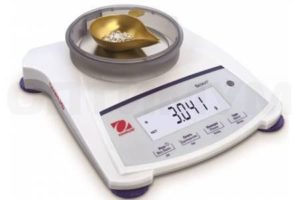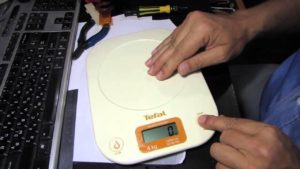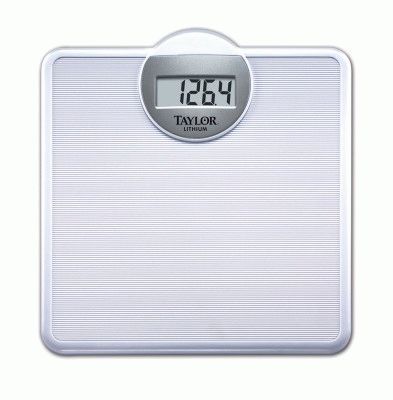Operating principle of electronic scales
 Humanity has been using devices to determine weight for many centuries. It is difficult to do without scales both at home and in production. Thanks to the use of new technologies and the introduction of an electronic mechanism of action, it was possible to achieve a positive result. Such devices can increase the accuracy of measurements, speed up the weighing process, optimize product packaging, and much more. This allowed electric scales to take a leading position in the sales market and displace mechanical predecessors.
Humanity has been using devices to determine weight for many centuries. It is difficult to do without scales both at home and in production. Thanks to the use of new technologies and the introduction of an electronic mechanism of action, it was possible to achieve a positive result. Such devices can increase the accuracy of measurements, speed up the weighing process, optimize product packaging, and much more. This allowed electric scales to take a leading position in the sales market and displace mechanical predecessors.
The content of the article
Types of electronic scales

The consumer is presented with a large selection of weighing devices. They differ from each other in dimensions, functional characteristics, designs, operational features and capabilities.
Depending on the scope of application, all devices are divided into several groups.
Household

This variety includes kitchen, universal tabletop, floor-standing, electronic steelyards, and pocket (mini) ones for accurately determining the mass of small objects.
Electronic devices in this category have certain differences.
- Models equipped with a special cup for weighing bulk and watery products.
- Devices with a platform and removable stands for measuring loads (objects) of different sizes.
All devices have different control systems.
Some modern models are equipped with additional functionality, for example, diagnostics of energy value, volume, etc.
Trading

Designed mainly for portion measurement of the mass of goods, with subsequent calculation of the amount, taking into account the cost per unit.
They are also used in warehouses to accurately determine product weight and in packaging departments for the purpose of high-quality completion of food sets.
It is relevant to use units with automatic label printing in self-service departments. All models are equipped with a display, which is located either on the body of the device or on a remote stand.
Medical

They have compact sizes. They are used in medical settings to weigh newborn babies. For a comfortable position for the baby, they are provided with a special platform. All information is displayed on the display.
Laboratory
Designed for optimal weight measurement.

Hydrostatic weighing allows you to determine the exact density of solids or liquids. Professional models are provided with advanced functionality.
Jewelry

They are distinguished by the development of absolutely accurate indicators; they should not exceed deviations of more than 0.01 grams. Exceptions are allowed when accepting scrap, here the error can be up to one gram.
As an additional equipment, there is a timer that records information about the measurement (date, weight, etc.). Thanks to this, the saved data can be transferred to a computer.
In addition, there are a large number of industrial scales: postal, industrial, crane, automobile, pallet.
The device of different types of electronic scales
Despite their use in different fields of activity, the design of electronic scales has similarities.

The following parts of the device are distinguished.
- Frame. It performs a protective function of internal content. Typically, plastic or glass is used for its production, this allows the structure not to be heavier.
- Display (digital screen). His work contains information on the weighing results on the board. Modern models are equipped with the ability to store various indicators in memory for later comparison.
- Strain gauge (microscopic plate). This component is the main sensory unit of electronic scales. Small plates are evenly distributed around the perimeter of the device. Deformed under the influence of excess weight, the electrical resistance of the strain gauge is distributed proportionally to the weight. Based on the summation of all indicators, the total value is calculated.
- Printed circuit board with microcircuit. It regulates the operation of the plates and also displays the final weighing data on the display. The board is equipped with memory, which allows you to most accurately track the dynamics of weight changes.
Electronic devices can be either battery-powered or rechargeable.
When choosing, you should give preference to one or another unit based on the upcoming frequency of use of the device. If your equipment is constantly busy, it is better to purchase battery-powered models. Some have a combined power supply system.
Important! Careful handling of the electronic device guarantees a long service life of the product.
How do electronic scales work?

At the beginning of their creation, they had an operating principle based on the oscillations of a measuring spring, similar to a traditional mechanical device. The only distinctive detail was the digital display, which displayed the final weight indicator processed by an electronic circuit.
Thanks to improvements in technological developments, the operation of modern electronic devices has become possible with the help of special built-in voltage sensors. This allowed for more accurate weighing.
The operating principle is based on converting the force of gravity that occurs when placing objects to be weighed on the platform into an analog signal at the output of force sensors.
The sensor transmits a load signal to the indicator to the microprocessor terminal with subsequent output of the result to the unit display.
Modern models are equipped with output to external recording devices such as a computer, printer, etc.
Products based on voltage sensors are more progressive. Even the simplest models of such scales can display weight with an accuracy of hundreds of grams.




